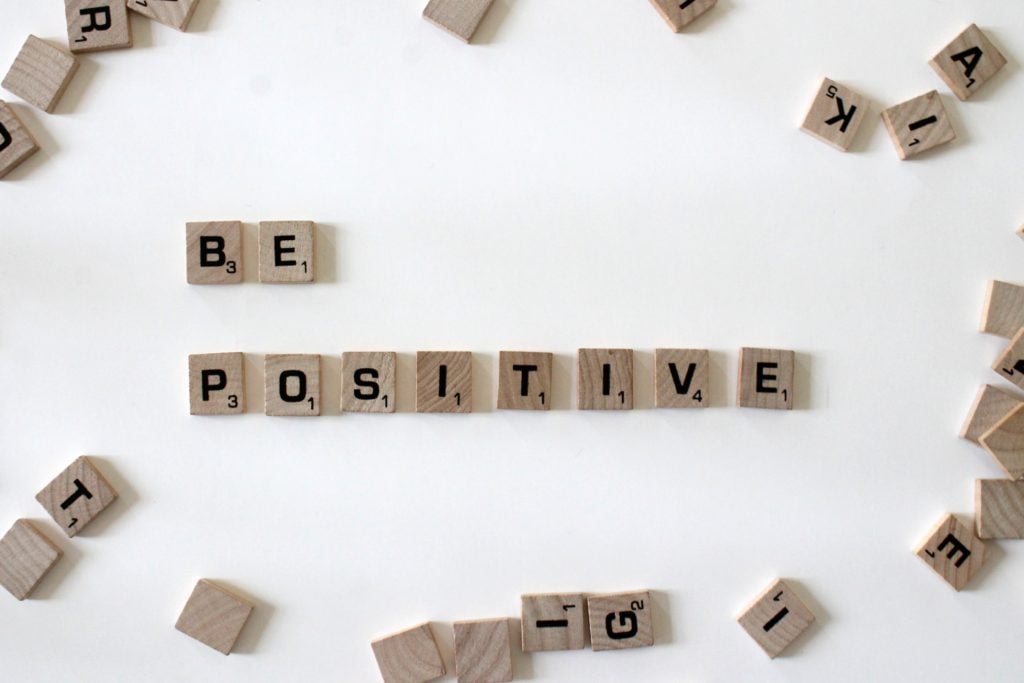
I catch myself being negative all the time. Sometimes I think negative things about myself. Other times, and I'm much less proud of this, I think negative things about others. So I created some positive thinking exercises to get my thinking back on track.
Now, I know a lot of you might be saying, "There's nothing wrong with negativity." Or "Oh no, is this another one of those mindless look-on-the-bright-side posts?"
Answer: no.
When I talk about being more positive, I'm not talking about being positive about everything. Some things legit suck.
Lose your job? That sucks.
Get a divorce? Sucks.
Someone you love is ill or dead? There is no sugar coating how awful that is.
Anyone that tells you to look on the bright side of everything did not get the whole memo.
My version of getting and staying positive is about figuring out when your negativity is rational and when it's a cognitive distortion. In other words, do some soul searching and reflection, so you know which sucky things suck, and which awesome things rock.
Before I get to the 6 positive thinking exercises, let's talk about cognitive distortions that might be preventing you from thinking more positively.
Cognitive Distortions
Cognitive distortions are irrational thoughts. There are a bunch of ways that your brain tricks you into not seeing things how things really are.
One way is called catastrophizing. This is when your brain goes to the absolute apocalypse instead of taking things as they come.
For example, if your boss frowns as she's walking past and you think you are going to be fired and never get another job and end up homeless and die alone on the streets, you are catastrophizing.
Another negative thinking cognitive distortion is mind reading. When you assume what someone else is thinking, you're definitely mind reading. And usually we're assuming negatively.
So the idea behind my brand of positive thinking is to get a handle on our cognitive distortions. How rational or irrational is your negative thinking?
For example, if your boss tells you that you are fired and that you are just generally awful, that is rationally negative.
If your boss looks angry, that is not rationally negative. She might be mad at someone or something else.
Once we get a handle on why we're negative and then how rational and based-in-reality that negativity is, then we can start getting more positive about things that actually do have a silver lining.
6 Positive Thinking Exercises
I've spent a decade researching and writing about improvisation, play, and the brain, and I've developed over 100 games to help people become more mindful, relaxed, connected, and confident. Some of these games are designed to help people get and stay more positive.
Here are 6 positive thinking exercises:
1. Affirmation Station

RuPaul says, "If you can't love yourself, how the hell are you gonna love someone else?" and I think that says it all about this first positive thinking game.
To start your day primed for positivity, just look into the mirror and start telling yourself all the amazing things about...you.
Compliment the hell out of yourself, but you need to really mean it. No empty or fake praise allowed.
2. The Good Book

The next of my positive thinking exercises is called The Good Book. But it's really just another name for a gratitude journal.
In order to start thinking more positively, I think it's important to keep a tally of all the positive things you've got going for you. What are you grateful for? What's fantastic about the people you know?
This meditation will then help you carry over this positivity into your nonjournal-writing day.
3. Did Anybody Die?

Now it's time to start putting things in perspective. This next game asks you to ask you if anybody died.
If someone really did die, then I am so sorry because that is really devastating.
But if they didn't then things just might not be so bad.
Once things are in perspective, you can go hunting for some good news.
But let me repeat, if things are not good, it's okay to let them be bad. But I do hope you'll try to suss out which things are rationally negative and which things aren't. It takes some self-awareness and reflection, maybe even some therapy sessions with a trained professional, but the pay off is a much more positive you.
4. High-Fives for Everyone

There used to be a day when people could high-five each other to their heart's content. I'm writing this during a decidedly anti-high-fiving time, but if you're reading this when high-fiving is okay again, then party on.
The game is simple. Just high-five as many people as you can. It's like a short-cut to positivity.
Have you ever seen a Negative Nancy high-fiving someone? Me neither.
It's fun and helps us connect and celebrate with each other.
If COVID-19 is still preventing us from real high-fives, might I suggest virtual air-high-fives or even socially distant air-high-fives. Is it weird? Sure.
Will it make you connect and smile with your fellow earthlings? Also yes.
5. The Spin Room

Once you start recognizing your cognitive distortions, it's time to start seeing things more clearly. It's time to start practicing seeing the bright side.
The Spin Room is simple. Just try to put a positive spin on something you perceive as negative.
Cat ran away? You're going to save money on cat food.
Husband ran away? You're going to save money on human food.
After you put your positive spin on it, it should be easier to see if it's truly negative or not. You might really miss your cat. That's valid! Mourn her loss. Search the neighborhood for her to get her back.
I guess the same goes for your husband.
Sometimes The Spin Room will show you that things really are bad or sad.
But other times, it will show you that things aren't quite as bad as they first seemed.
6. On The Other Hand

On the Other Hand gives you a formula for trying to see the positive in various situations.
When you catch yourself saying or thinking something negative, just add, "On the other hand..." and add something more positive.
You can also use "However" or "But" or whatever word or phrase helps you to transition from a Debbie Downer to a Bright Side Betty.
This helps me break the negativity cycle or the complaining session. Positivity is a good way to stop incessant negativity.
Final Thoughts on Positive Thinking Exercises
Positivity shouldn't be your default setting. I like that I am a critical thinker and that I have the autonomy to decide what's good and what's bad for me.
However, I also don't want to be chronically and automatically negative. I don't want to be a gossip or a whiner.
I want to be able to see the positive when it exists.
Hopefully, these 6 positive thinking exercises will help you start to identify your negative thinking patterns so you can start thinking more positively when it makes sense to do so.
Positivity Challenge
And if you're looking for a challenge, check out The Positivity Challenge to practice positivity for an entire week.
Virtual high-five for reading the entire article!
And thanks for checking out the blog.
